At just 19, Kwame Poku (175cm/5’9”, 64kg/141lbs) has made 75 competitive appearances for Colchester United since signing for the U’s in May 2019. Earlier this year, the teenager went on to make his first appearance for Ghana, playing 11 minutes in a CAF Africa Cup of Nations qualification clash versus São Tomé and Príncipe.
Poku’s international call-up caused some controversy amongst members of the Black Stars faithful, with some Ghana fans questioning the inclusion of a teenager plying his trade in England’s fourth-tier, EFL League Two, alongside stars like Thomas Partey, who joined EPL giants Arsenal from 2020/21 La Liga champions Atlético Madrid for a reported €50m (£45m) last summer.
Poku’s market value is no doubt currently just a fraction of Partey’s. However, it’s understandable why Ghana’s FA were perhaps so keen to lock London-born Poku in for their national team, as it’s clear from our analysis that he’s a very exciting talent.
In this tactical analysis piece, in the form of a scout report, we’ll provide analysis of some key strengths and weaknesses in Poku’s game. We’ll look at his role within Hayden Mullins’ tactics and highlight why the Colchester United manager spoke in glowing terms about Poku earlier this year when he said: “There’s still loads to come from” the attacker. We’ll also explain why, with less than 12 months remaining on his U’s contract, he could be ready to compete at a higher level.
Where does Poku play?
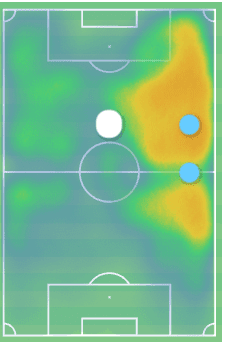
Thus far during his young professional career, Poku has played in a variety of positions for Colchester. He’s been deployed centrally, in the ‘10’ position, as well as on both wings in wide forward and wide midfielder roles, respectively. As figure 1 indicates, though, Poku is primarily an attacking midfielder, having played the majority of his games in the ‘10’ position, with the right-wing acting as his secondary position.
Even when deployed as a ‘10’, Poku likes to vacate zone 14 to move into the half-spaces, especially the right half-space, which figure 1 also indicates is a hot spot for him. Regardless of whether his base position is more central or wider, Poku loves to drift into the half-space both with and without the ball.
Both the ‘10’ and right-wing positions suit Poku well as long as he’s given license to drift into the right half-space, where he tends to spend most of his time and cause the most problems for the opposition.
When playing at left-wing and cutting inside, Poku is forced to use his weaker right foot more, which he’s able to do but there’s a significant drop-off in his effectiveness with the right foot compared to the left, so playing him here isn’t optimal.
Dribbling
Last season, Poku completed an average of five successful attacking actions per 90. This is very impressive, ranking him fourth out of all attacking midfielders to have played at least 800 minutes in League Two in the 2020/21 campaign, and highlights just how much of an offensive threat he poses.
As well as this, Poku is a high-frequency dribbler and his tendency to dribble, along with his respectable dribble success rate, was one big reason for his high number of successful attacking actions per 90. The Ghana international took on an average of 7.24 dribbles per 90 last season – ranking him third among League Two attacking midfielders for 2020/21. He ended the season with a 51.38% dribble success rate, which isn’t, on its own, anything to shout about – it’s fairly average for League Two’s attacking midfielders, but combined with his high dribble frequency, means that he pulls off a relatively high number of successful dribbles per 90 in League Two and so it’s understandable why his team is happy to give him so many dribbling opportunities.
Poku’s 3.32 progressive runs per 90 (more than all but one other League Two attacking midfielder) highlight how often he drives his team a significant distance up the pitch via his ball-carrying – this is especially useful when Poku picks the ball up deep during build-up or transition to attack.
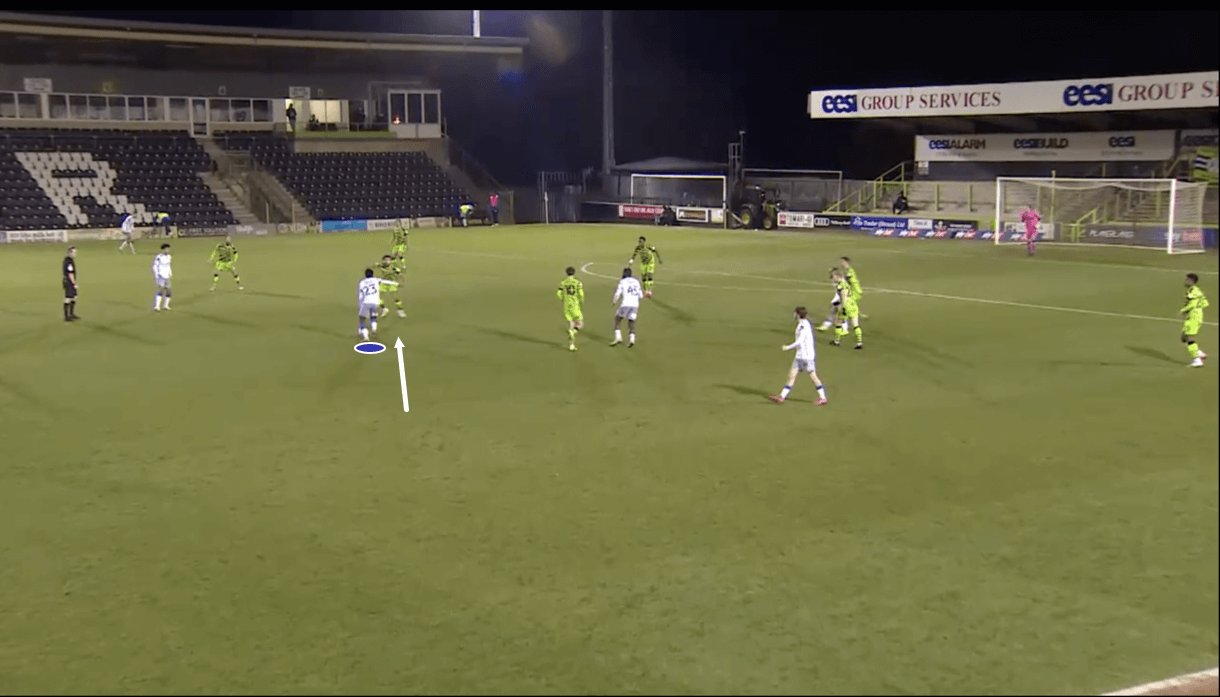
Now we’ll look at some in-game examples of Poku’s dribbling and highlight some of what makes him so effective with the ball. Firstly, in figure 2, we see Poku running into the centre from the right half-space where he’d just picked up the ball. While moving diagonally across the pitch, we see that he’s got himself facing the opposition’s right central midfielder.
Poku has great agility and speed. He’s well able to turn at speed on the ball and take advantage of spaces like the one we see between the opposition’s two central midfielders here. Additionally, Poku’s very good at disguising his next move through body movements. This intelligently disguised movement, combined with his speed and agility, makes him very dangerous in tight spaces and 1v1s.
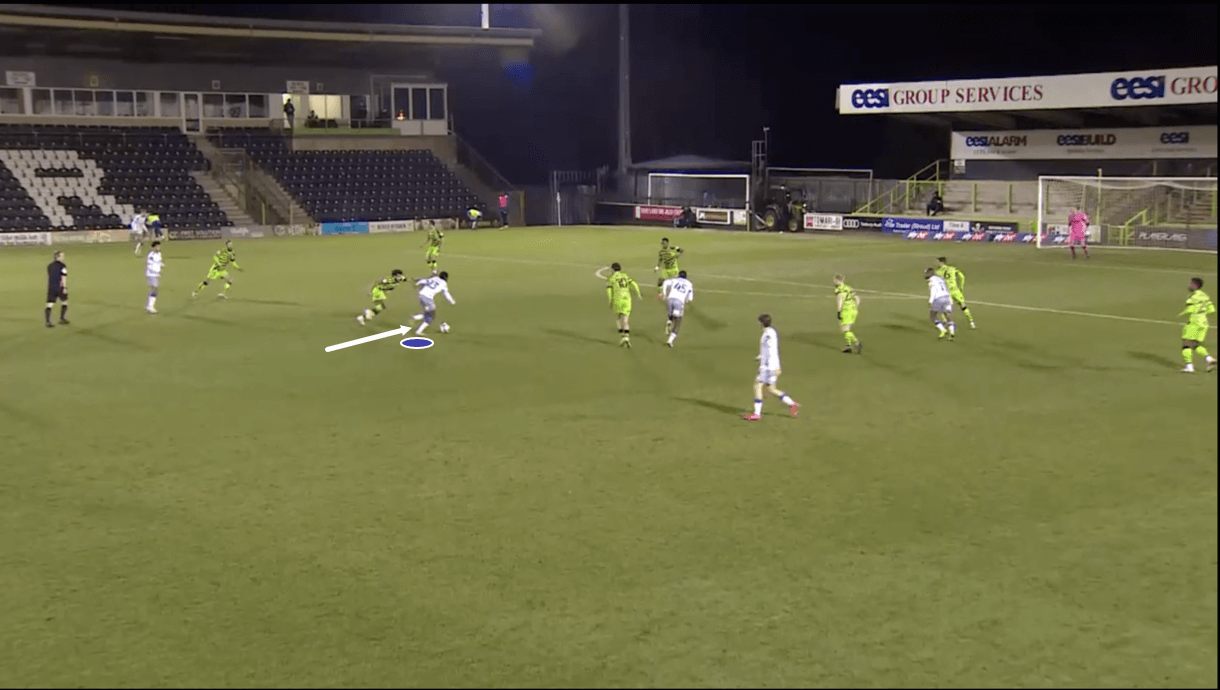
As play moves on into figure 3, we see that he deceived the opposition midfielder very well and managed to break through midfield on his inside. At this point, Poku is very difficult to stop because he combines speed, ball control, and strength.
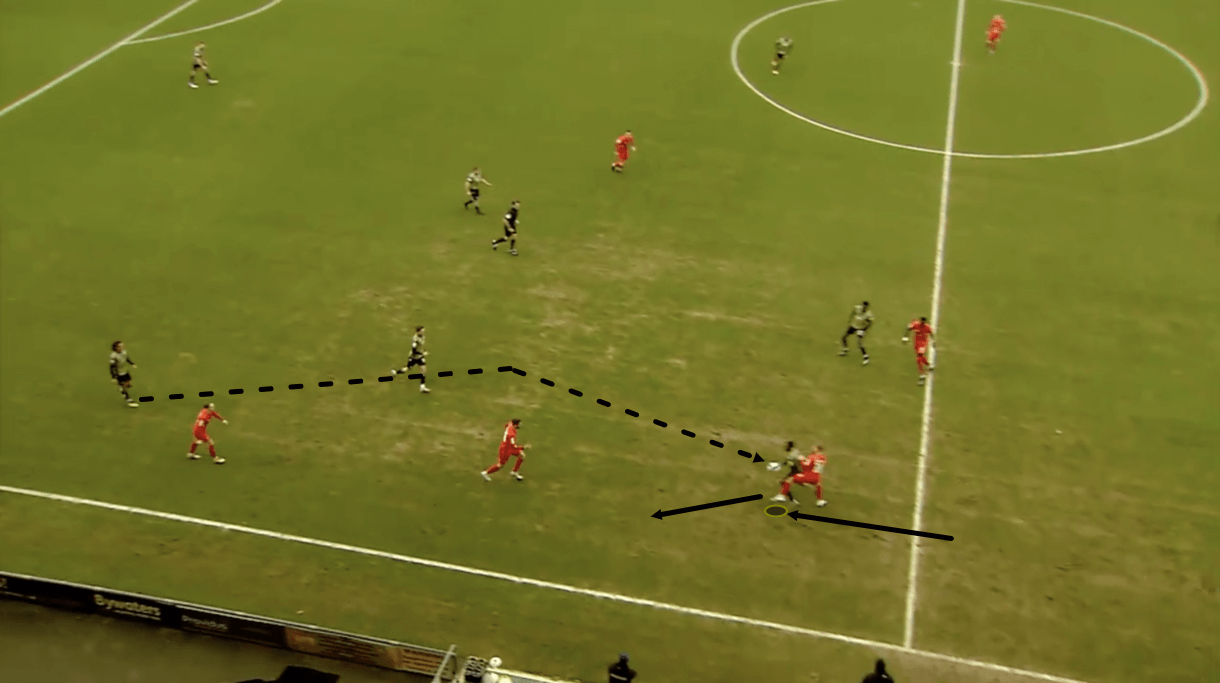
Thanks to his speed and dribbling ability, Poku is good at receiving through balls. He can help his team to break opposition lines this way. However, as we see an example of in figure 4, he also loves to receive the ball with his back to goal. He does this a lot both as a ‘10’ and at right-wing.
While Poku’s not a giant, he is well built. He’s got strong legs and a strong upper body which he’s comfortable using to back into opposition defenders and hold them off before receiving the ball on the wing or centrally in situations like in figure 4. This, combined with his ball control, dribbling quality, and good awareness of his teammates’ positioning, makes him a very good outlet for holding up the ball.
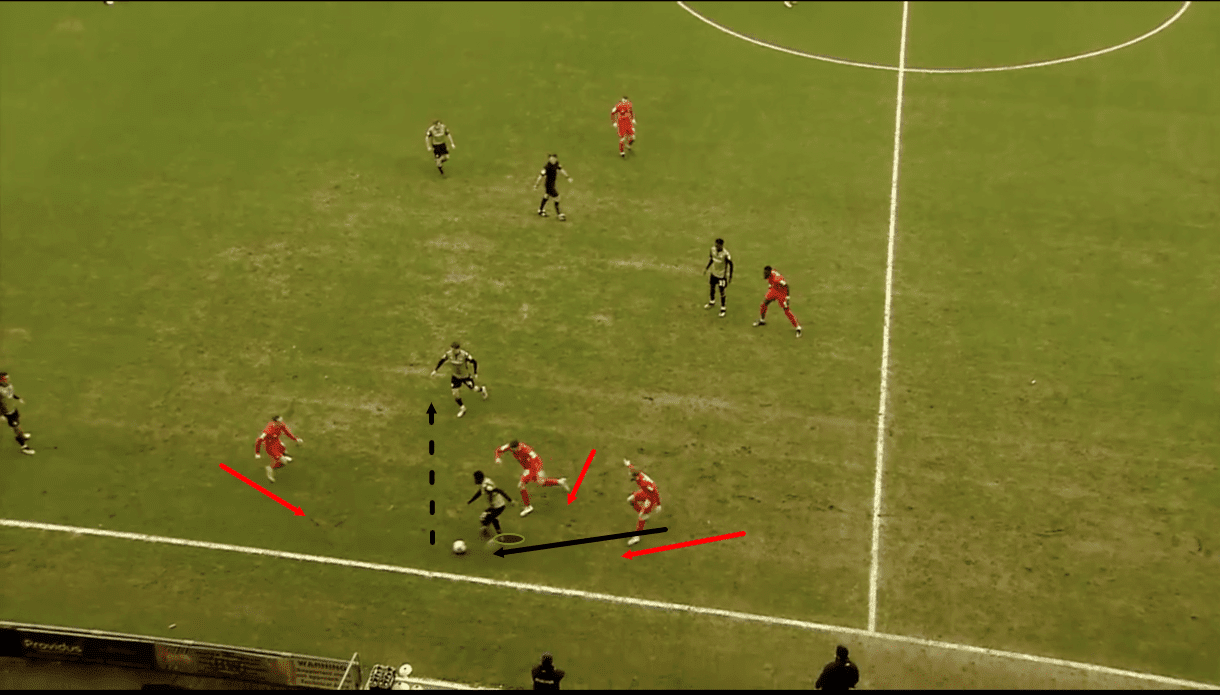
As this particular passage of play moves on into figure 5, we see how Poku broke away from the defender behind him on receiving possession and started carrying the ball. As mentioned previously, he’s good at turning at speed and carrying the ball over long distances and this may have played a part in two other opposition players joining the defender he’d been backing into in crowding around Poku and denying him much space to move.
Poku’s threat, as well as his dribbling quality, is often successful at attracting pressure from several opposition players at once, as was the case in figure 5. Thanks to his ball control and agility, though, the playmaker is very good in tight spaces and often does well in these scenarios. As play moves on, we see the teenager play the ball out from this tight space to the nearest teammate supporting him centrally. By getting out of this tight space and evading the pressure, Poku took a few opposition players out of the game momentarily and helped his team to progress upfield, putting the opposition on the backfoot.
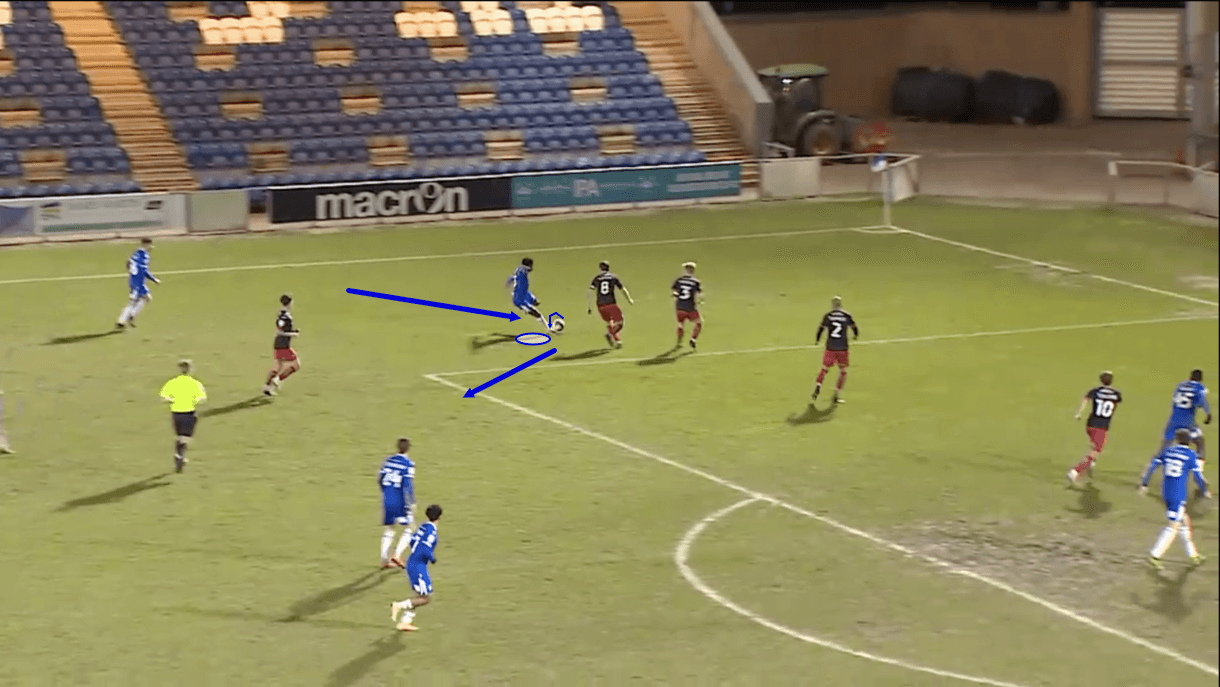
Briefly looking at some signatures to Poku’s dribbling game, he loves a ball roll. We see an example of Poku pulling off his signature ball roll in figure 6 where he’s just carried the ball down the wing and is now shaping up for a cross on his left foot. However, as play moves on, we see that instead of pulling the trigger on a cross, Poku opts to roll the ball inside onto his right foot and this nice bit of footwork, combined with his ability to turn at pace, helps him to continue his dribble, taking the ball through the space on the corner of the opposition’s penalty area.
By pulling this off successfully, as he so often does because of how well he disguises the movement, Poku manages to take several opposition players out of the game. It’s a really effective and well-practised movement that we see Poku pull off regularly for Colchester. It can be very difficult to defend against as he doesn’t telegraph it – he’s just great with his feet and great at turning with pace.
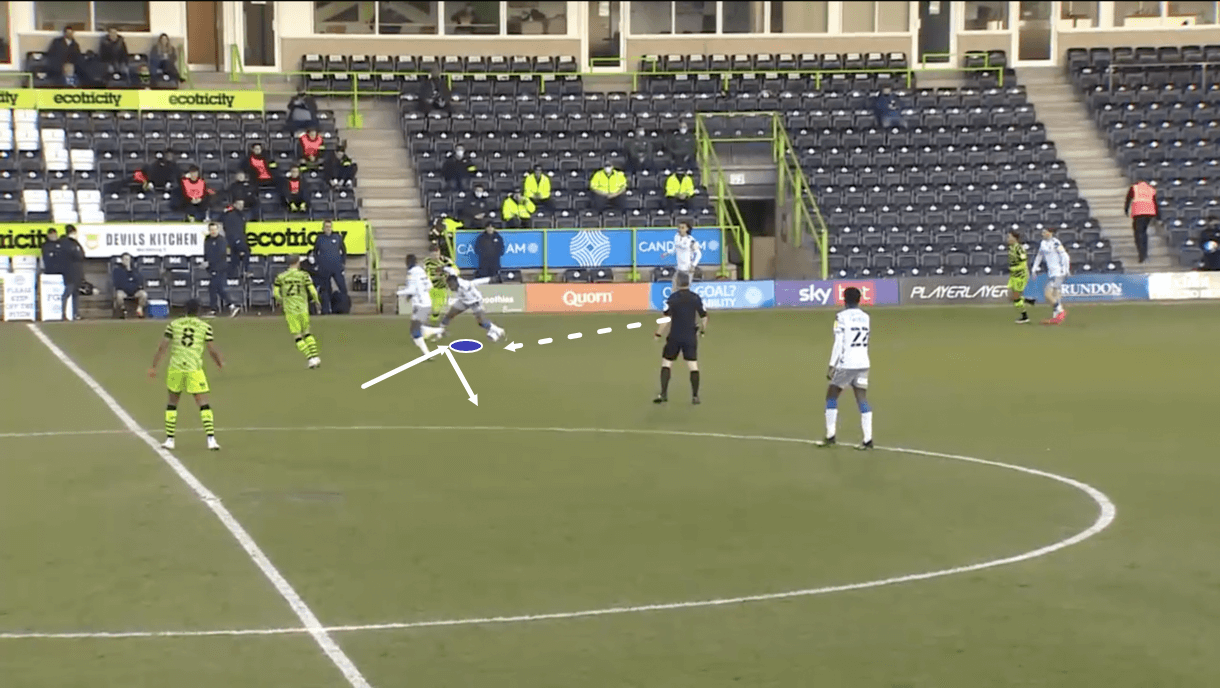
Yaya Touré, formerly of Barcelona and Manchester City among others, recently produced a column for The Athletic in which he waxed lyrical about the importance of using your bum to protect the ball. In his words: “The bum is important as it can create a moment of space between you and another player, so you have more time with the ball.” It’s evident from observing Poku that this is an area in which he also thrives.
Impressively, the 19-year-old engaged in a very high 14.68 offensive duels per 90 last season (an offensive duel includes dribbles as well as instances of an attacker protecting the ball from a defender with his body). Despite engaging in so many offensive duels, Poku ended last season with a 41.69% offensive duel success rate, which ranks him highly among League Two’s attacking midfielders in this area. We already know about Poku’s relatively average dribble success, it’s his relative success at protecting the ball which propels him from fairly average to one of League Two’s best in terms of offensive duels and his bum plays an important part in that.
As mentioned earlier, Poku is strong. He’s got strong legs and strong hips, while he can also comfortably turn at pace. He’s great at using his body to hold off opposition defenders while receiving the ball and while turning in possession and we see an example of how his bum helps him in these situations in figure 7.
Passing
Poku loves to play through passes. Last season, he played 1.8 through passes per 90, ranking him fourth amongst League Two’s attacking midfielders. He loves to be in the final third, outside of the penalty area with runners ahead of him to aim for with line-breaking through passes.
On the ball, he’s a creator and a bit of a risk-taker. He opts for risky passes over safe passes a lot. Yes, this will lead to lost possession, however, Poku is a ‘high-risk, high-reward’ player in terms of his passing and this makes him a great playmaker for a team that likes to take risks inside the final third, that is happy to allow players some creative freedom, and that isn’t overly concerned with losing possession in the final third.
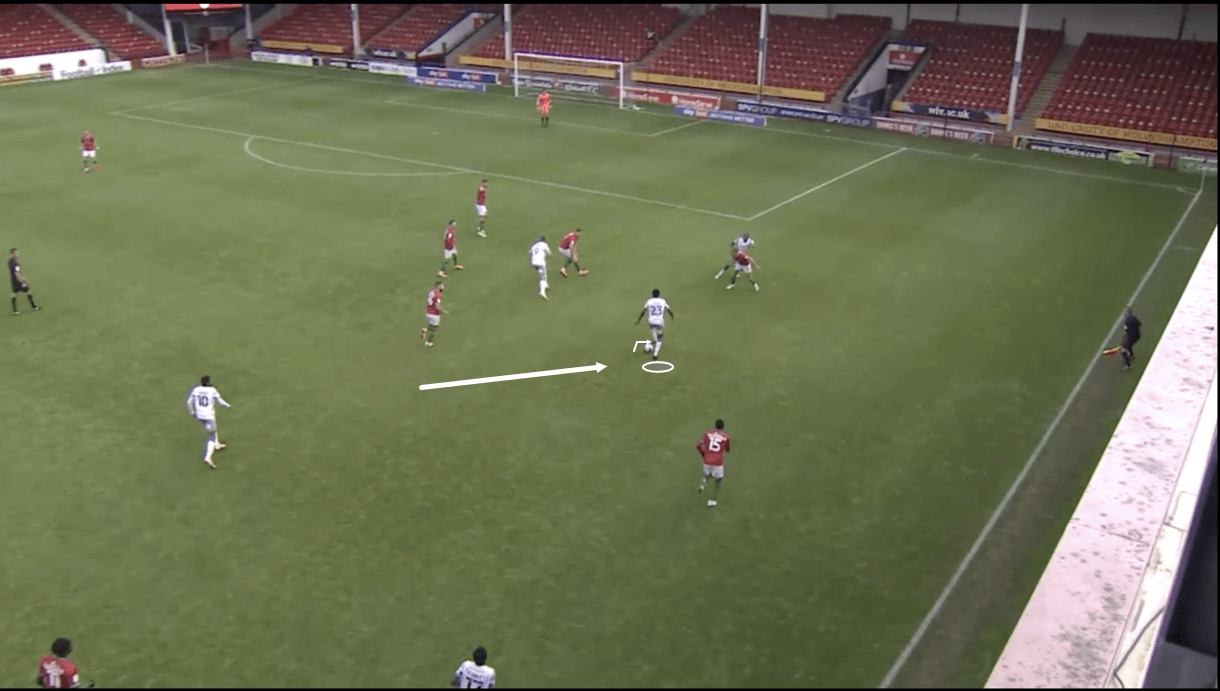
As mentioned when discussing his dribbling, Poku is good at disguising his next offensive move from the opposition and this is also true when that next move is a pass. The passage of play beginning with figure 8 provides an example of how Poku combines his dribbling with his penetrative passing inside the final third to break opposition lines. Firstly, just before figure 8, Poku picked up the ball slightly more centrally. Then, he shifted outward into the position we see him occupying now, where he’s enjoying plenty of space before he manoeuvred his body to face inwards again by performing a ball roll and changing direction.
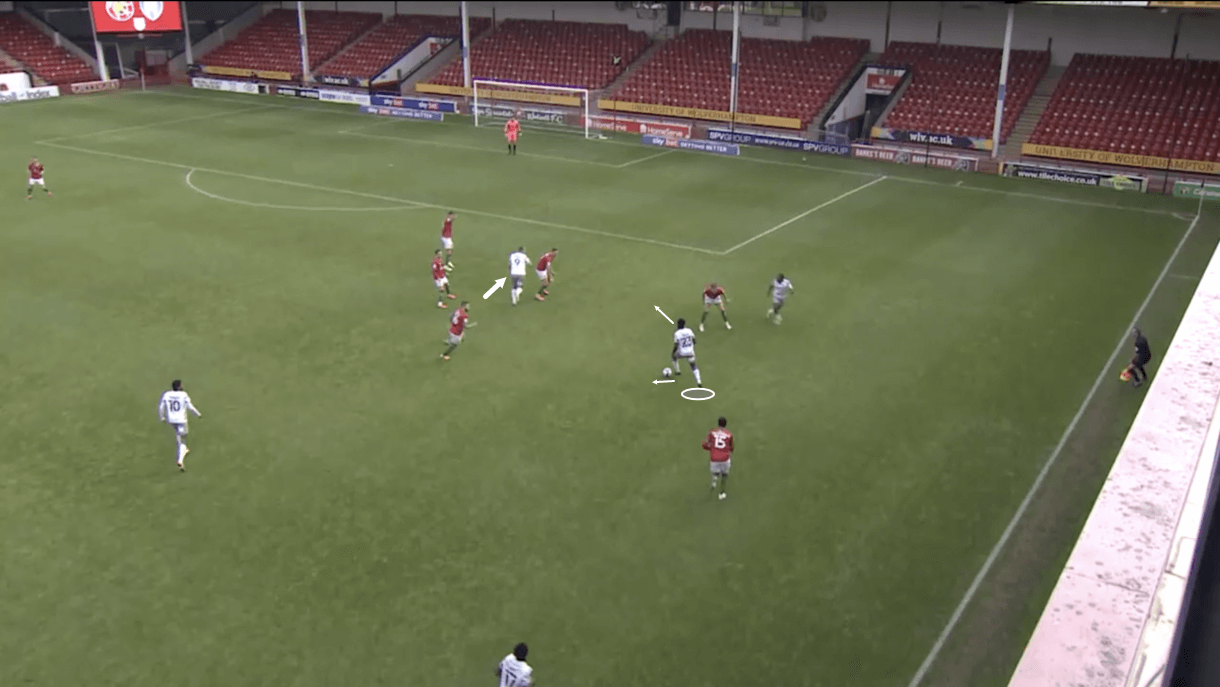
As we see in figure 9, after his ball roll, Poku knocked the ball to the centre ever-so-slightly with the outside of his left foot. He often follows the signature ball roll up with this outside-of-the-boot touch. This helps him to reposition himself to face inwards again. At this point, it’s worth noting that Poku is looking at his centre-forward teammate’s run in behind the opposition backline, planning to ultimately send the ball through to him via the gap between the left-back and left centre-back. However, by turning to face the centre, Poku faces himself away from this gap and disguises his intent, leaving the opposition considering the possibility that he will continue his dribble back inside or play a backwards pass.
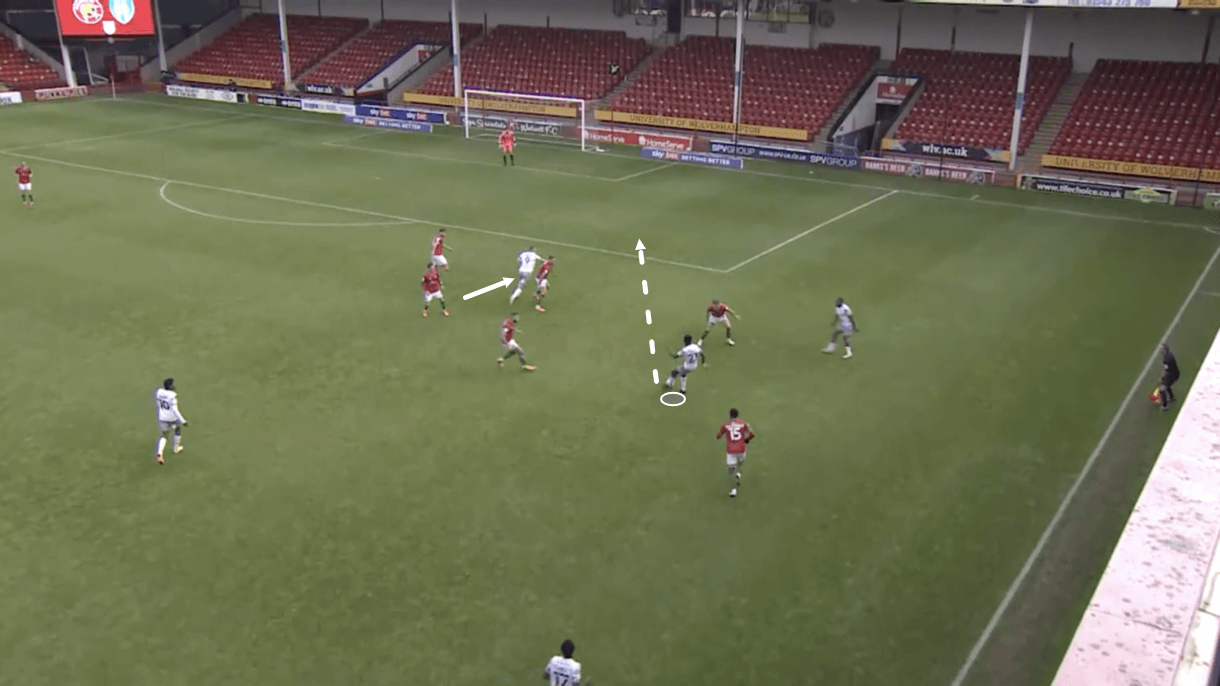
As play moves on into figure 10, we see that playing backwards was the furthest thing from Poku’s mind as he ultimately sets his centre-forward teammate off in behind via a defence-splitting through ball. Poku got into this position and then disguised his intent through his dribbling quality and observed his teammate’s run via scanning and awareness, before splitting the defence and putting him through on goal with his technical passing quality. Poku is always looking for chance creation opportunities like this. This passage of play also highlights why Poku loves to be in this near-to-the-centre, right-sided area where he can face inwards and create with his stronger left foot.
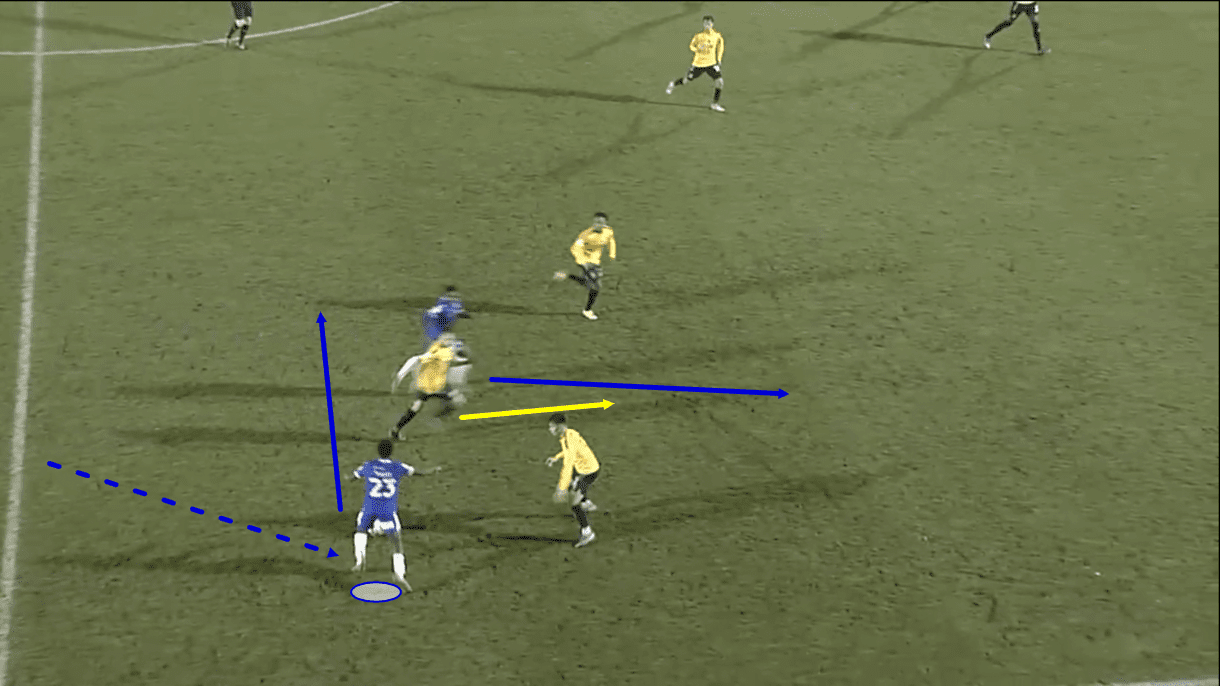
In figure 11, we see an example of an occasion where Poku picked up the ball out wide on the right wing before taking it inside, as he often does. This example highlights that while Poku loves to make this movement inside the final third, he’s also comfortable moving inside with the ball deeper than that – in the middle third.
Additionally, figure 11 shows an example of Poku taking advantage of space created in the centre by his teammate’s intelligent, unselfish run. We can see how his teammate ran through, giving Poku an immediate through ball option but also dragging an opposition player away from the space he could to dribble into should that defender block the through pass lane, as he ultimately did.
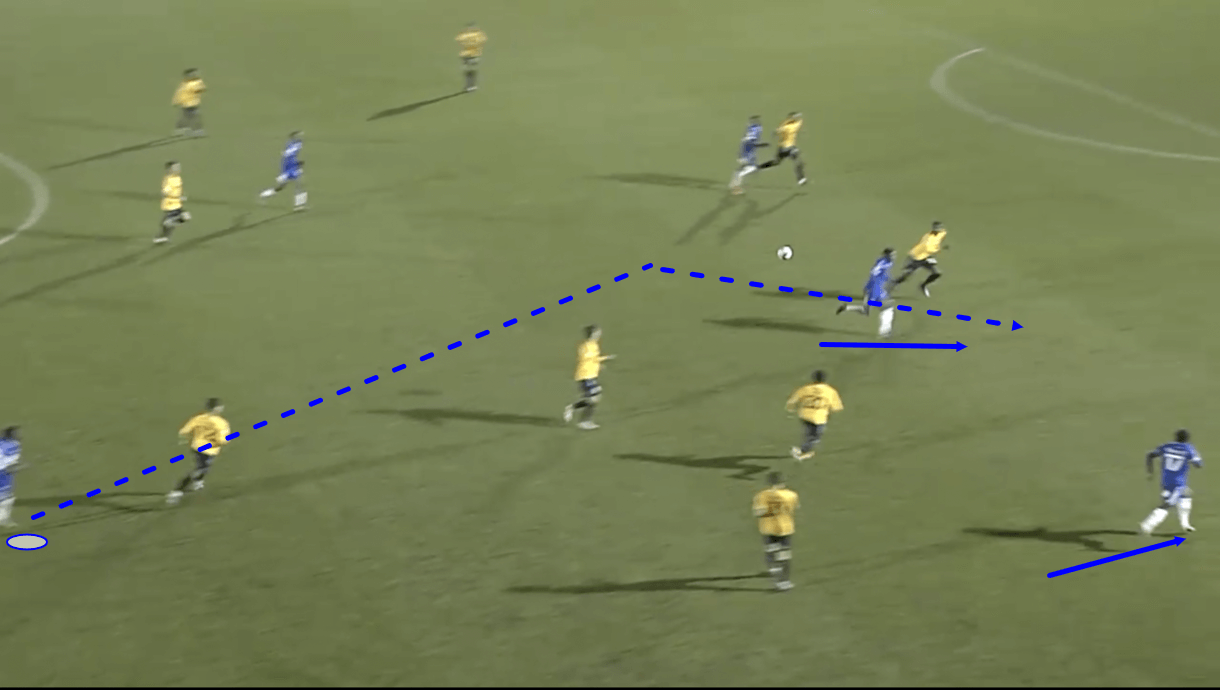
Ultimately, Poku’s always looking to play defence-splitting through balls. If one of these passes is on, this will be the option he takes over safer passes and that was the case here, as we see from figure 12. Poku doesn’t often play long passes – he’s not often in a position to do so. However, he’s quite good at them and can operate well as a playmaker from deeper in the opposition half thanks to his vision and technical passing quality.
Here, he picked out his centre-forward teammate’s run and sent a lofted through ball over the opposition, into a gap in the defensive line that his teammate was attacking. This set the teammate through into the opposition’s box. Poku played just 2.04 long passes per 90 last season – low for a League Two attacking midfielder. However, he ended the campaign with a 50.98% long pass success rate – high for a League Two attacking midfielder. When playing against a higher defensive line with space to attack in behind, Poku is capable of playmaking from slightly deeper effectively.
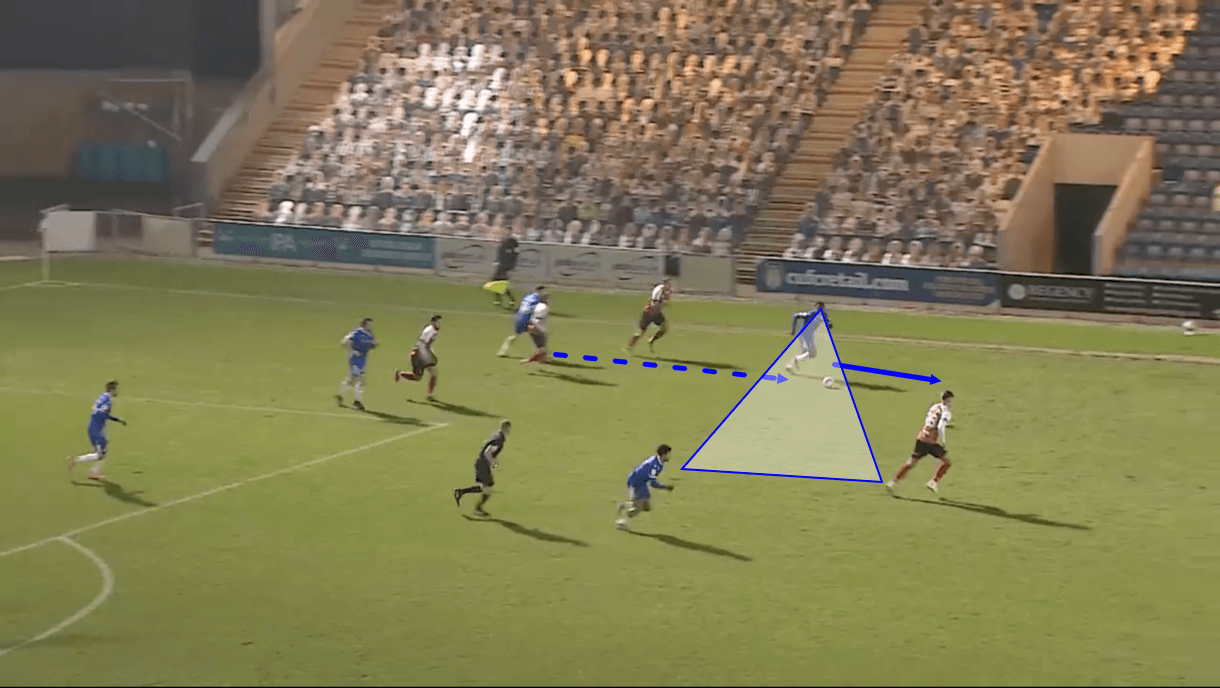
Lastly, Poku’s passing threat extends to the transition to attack phase as well, which we see an example of in the passage of play beginning with figure 13. Just before this image, Colchester’s opponents were on the attack high up the pitch but the U’s managed to regain possession just on the edge of their box. Colchester often look for Poku immediately after regaining possession because of his ability to release pressure through ball-carrying and passing. That was the case in figure 13 where the ball was immediately sent through to Poku on the edge of the area after Colchester regained possession.
While running onto the through ball, Poku got his head up and spotted a near teammate’s run into space centrally. This is an example of Colchester benefitting from Poku’s impressive awareness of his surroundings. He’s constantly scanning around before receiving possession regardless of where he is on the pitch. A lot of the time, it just seems like Poku is excellent at making good decisions very quickly but his decision-making is undoubtedly helped by his scanning, which is a prominent part of his game.
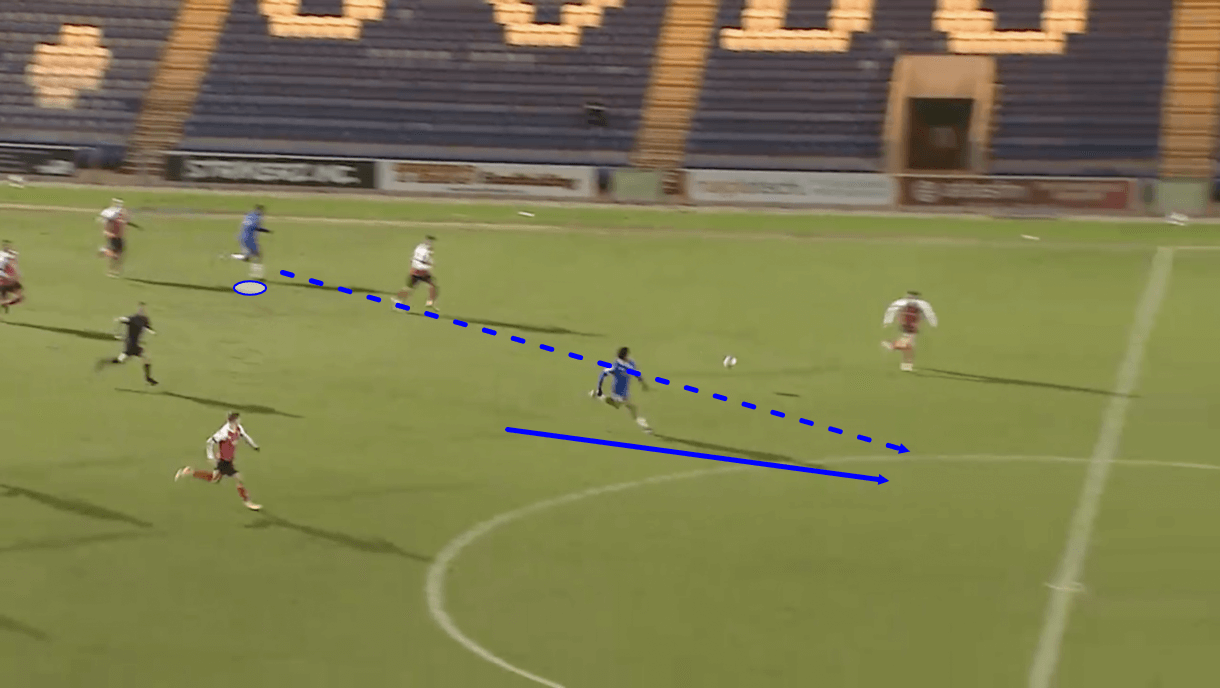
Poku begins this Colchester counter-attack by carrying the ball upfield a few steps, releasing the pressure on the backline behind him. As we see in figure 14, though, when the runner ahead of him got close to entering the opposition half, he released and sent the player through via a well-timed and well-weighted ball.
This passage of play provides an example of how Poku can be very useful during transition to attack. Thanks to his dribbling and pace, he’s good at carrying the ball upfield, while thanks to his vision, scanning and passing quality, he can pick out runners ahead of him and exploit the opposition’s weakened defensive line in transition. He’s always positioned quite deep during this phase as he’s extremely active and diligent with his defensive duties so he’s often a good passing option for his teammates after regaining possession deep. Thanks to his dribbling and passing qualities, he’s a great playmaking asset on the counter.
Defensive work-rate
Poku made 7.08 successful defensive actions per 90 last season, which ranks him highly in this area amongst League Two’s attacking midfielders. Additionally, the teenager engaged in 7.36 defensive duels per 90 with a 57.61% success rate last term, which means he both engaged in a lot of defensive duels for a League Two attacking midfielder and came out successful from a relatively high number of them.
Simply put, Poku is extremely active in defensive phases. His high defensive contribution makes him an asset in terms of winning the ball back, but this then also turns into another offensive facet to his game because he helps his team to force high turnovers a lot, thus helping them to create opportunities to counter-attack the opposition’s weakened defence from a very high and dangerous position.
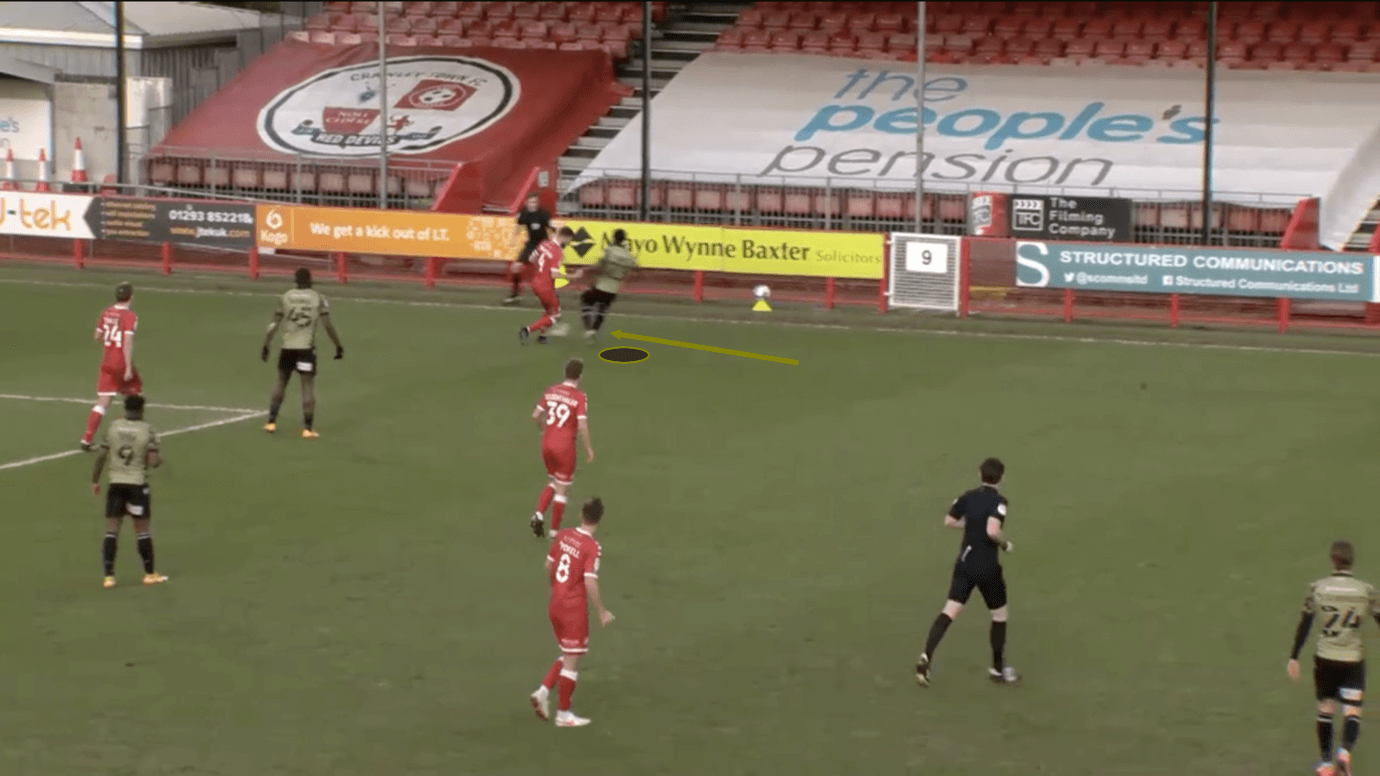
We see an example of Poku in action off the ball in figure 15. Just before this image, the opposition played the ball out to this wide defender who took the ball wider and shaped up to hit a long ball upfield. However, hard-working, pacey Poku abruptly closed him down and prevented him from sending the ball long. Instead, the Ghana international blocked his pass/clearance and forced a high turnover by reacting to the loose ball quicker and taking it into his control via his impressive dribbling ability.
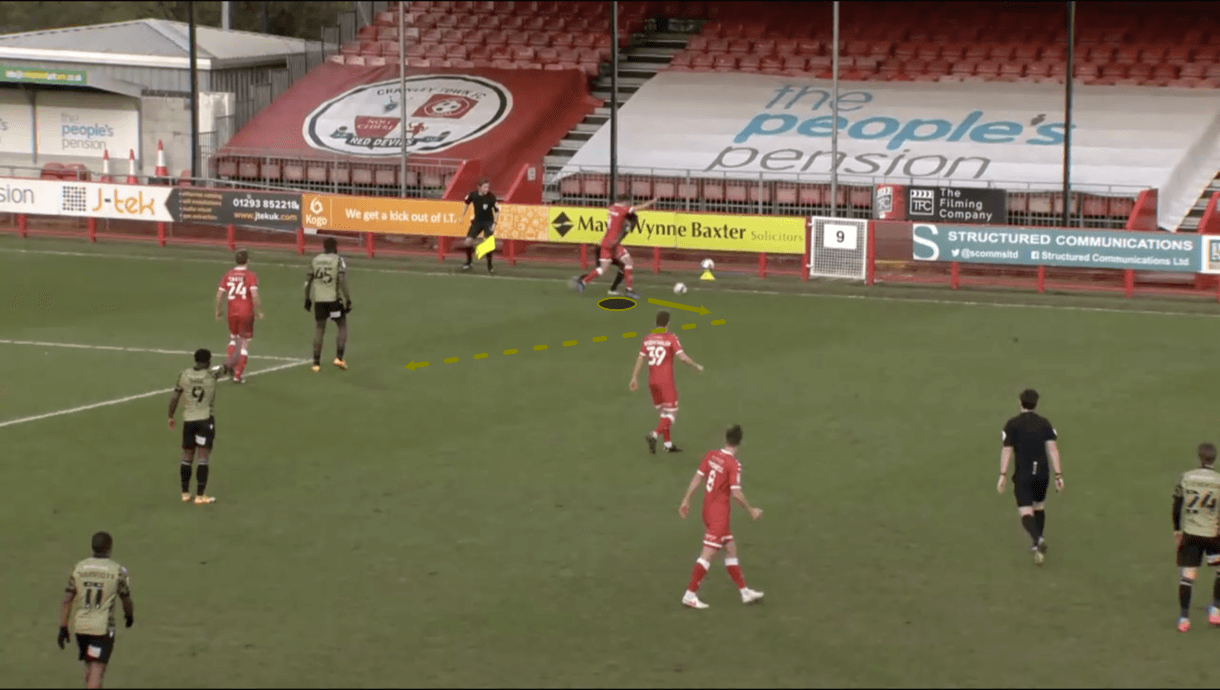
As play moved on into figure 16, we see another example of Poku using his impressive strength to hold off the larger opposition player who was desperately trying to win the ball back, while keeping possession. After this image, we see Poku work hard to continue holding off the defender, retain possession, and ultimately send the ball into a teammate positioned more centrally who could then take advantage of the weakened opposition backline that Poku’s aggressive pressing created.
Poku is a quick and aggressive presser, while he can very aptly be described as a hard-working player off the ball. He has forced high turnovers a lot for Colchester and he could be a great asset for a team that likes to press aggressively.
Additionally, his defensive qualities can combine very well with his risk-taking nature on the ball, in terms of his passing. Yes, the risk-taker in him can lead to lost possession. However, with how aggressive he is off the ball and how good he is at winning the ball back, he regains possession high a lot too so can be very effective in the counter-press after losing possession in the final third.
Negatives
It’s important to, at the very least briefly, discuss more of the negatives in Poku’s game. Firstly, while Poku is strong, technically impressive, and as a result good at holding up the ball in this sense, he is poor in the air. Last season, he had a 10.17% aerial duel success rate which is terrible. As mentioned previously, he’s not a giant. Additionally, while athletic, he doesn’t have a high jumping reach and so, he can be dominated in the air.
While he often plays at right-wing or at least drifts out wide onto the right-wing, he isn’t a good crosser. It makes even more sense why he loves to drift into more central areas from the right with the knowledge that he’s not a great crosser and is more limited in terms of how he can impact the game via his crossing in wide positions. The playmaker ended the 2020/21 campaign with just 16.67% crossing accuracy, which is poor and highlights his deficiencies in this area.
Poku also underperformed both his xG and xA last term. He should be making more goal contributions. I believe he’s a fantastic playmaker, a joy to watch, and will likely make some well overdue goal contributions – especially assists – this season, with Colchester or another side should he secure a move away to a higher level. However, the fact remains that his end product was lacking last term and until he does make up for this, that can be held against him. Again, I don’t think this is anything to worry about long-term, especially for a 19-year-old. There is more than enough there in terms of his performance to suggest that he can be a very effective playmaker at this level, if not higher.
Poku can improve his shooting, however. He is someone who opts for power over precision most of the time and this leads to plenty of inaccuracy in his shooting, so that is something to fine-tune as his career progresses – don’t take the power away, it’s a great tool but he just needs to refine his technique and improve accuracy. Meanwhile, a lot of his shots are also blocked as he often takes shots on with multiple defenders around. This can catch the opposition goalkeeper out when the shot does find its way through the defenders but most of the time the shots are blocked, so shot selection may be something to think about as well to improve output.
Conclusion
In summary, I think Poku’s a thrilling playmaker. He loves to take on multiple men and loves attracting pressure. He’s great in tight spaces, while he’s also very physical and well able to use his body to hold off opposition defenders. He’s a very intelligent passer and loves to play line-breaking passes to runners ahead of him, and he’s also generally very active in defensive phases. On the flip side, Poku is weak in the air, should increase his goal contributions, and isn’t a great crosser.
The positives far outweigh the negatives with this teenager, however, and I think he could contribute at a higher level than League Two, ideally for a club that likes to take risks inside the final third and that presses aggressively. A team like League One Sunderland could provide a good environment for Poku, for example, in my view.


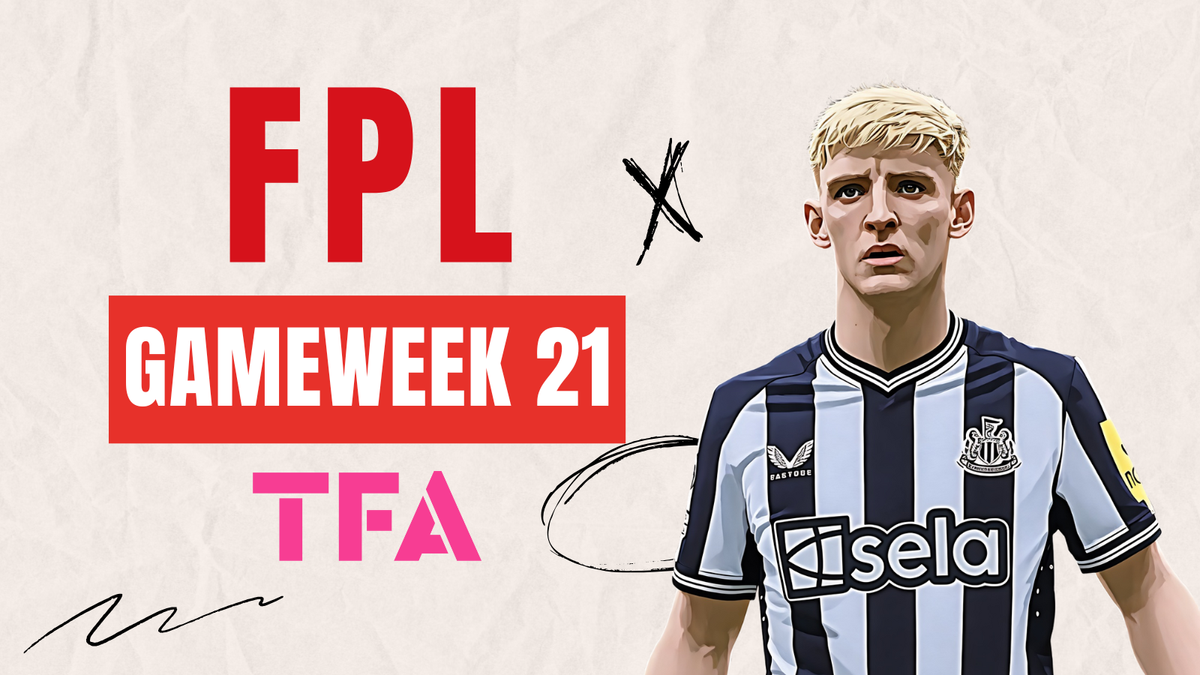

Comments